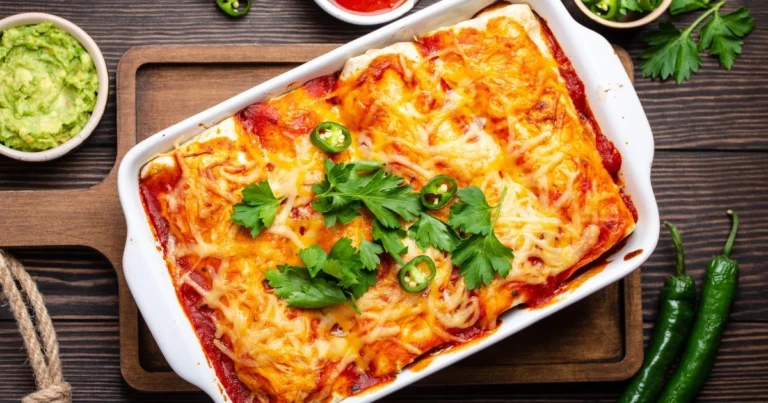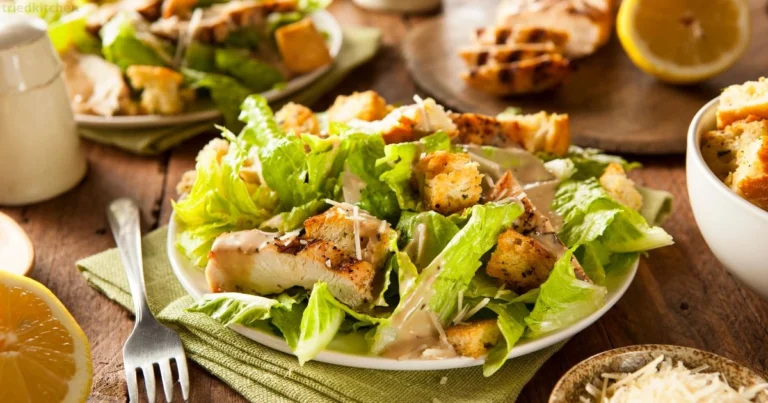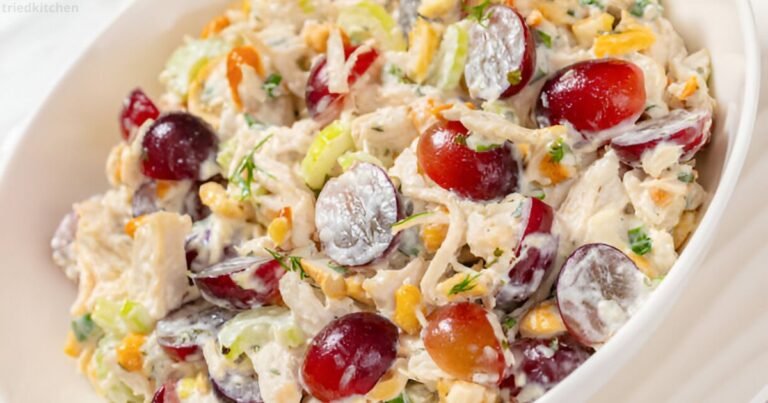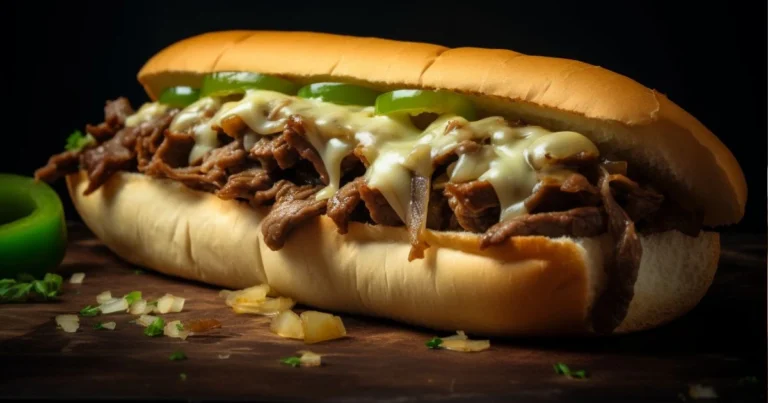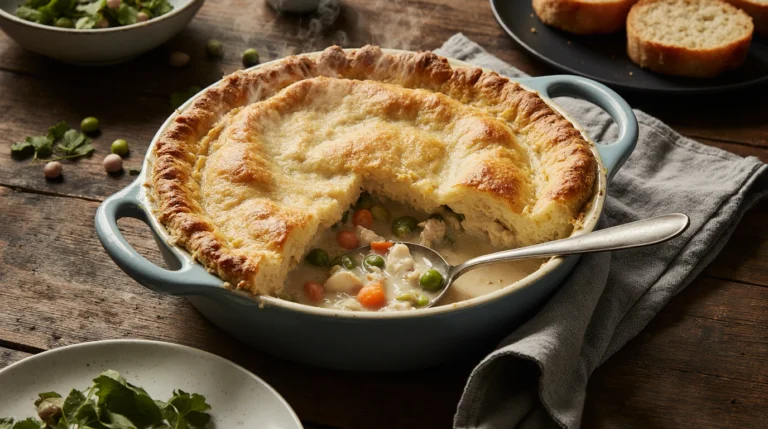How to Make Chicken Wraps at Home: Step-by-Step Guide
Craving something quick, delicious, and endlessly customizable that hits all the right spots? You’ve certainly been there – peering into the refrigerator, contemplating what to prepare that’s both satisfying and straightforward. Dismiss the notion of soggy takeout and limited choices! Envision yourself sinking your teeth into a fresh, flavorful chicken wrap, meticulously crafted to your desires, right in the cozy confines of your own kitchen. This guide transcends a mere recipe; it’s about empowering you to construct a versatile, wholesome, and incredibly palatable meal that will become a staple in your culinary repertoire. Prepare to transform everyday components into a gastronomic masterpiece that is distinctly yours.
Table of Contents
Why Make Chicken Wraps at Home?
Embarking on the journey of crafting your own chicken wraps at home offers a multitude of benefits that extend beyond just a quick meal. You’re not merely preparing food; you’re investing in your health, your wallet, and your culinary autonomy. Let’s delve into the compelling reasons why bringing the chicken wrap experience into your home kitchen is a truly astute decision.
Firstly, consider the significant cost-effectiveness. When you compare the expense of purchasing pre-made wraps from a deli or opting for takeout, the savings you’ll realize by assembling your own are substantial. The core ingredients for a chicken wrap are often pantry staples or readily available at a reasonable price. You’re paying for the components, not the convenience fee, the labor, or the overhead of a restaurant. Over time, these small savings accumulate, leaving more in your pocket for other pursuits.
Secondly, and perhaps most importantly, is the unparalleled ability to create healthier options. When you prepare your chicken wraps, you are in complete command of every single ingredient. This means you can actively reduce sodium levels, which are often excessively high in commercially prepared foods. You can control the types and amounts of fats, opting for leaner cuts of chicken and wholesome sauces. Artificial additives, preservatives, and questionable ingredients become a non-issue because you’re selecting fresh, whole components. This direct control allows you to tailor your meal precisely to your dietary requirements and health objectives, whether you’re managing blood pressure, watching your caloric intake, or simply striving for cleaner eating.
The third, and arguably most exciting, advantage is the sheer power of customization. Your chicken wrap is a blank canvas awaiting your personal touch. Do you prefer a spicy kick? Add extra jalapeños or a fiery hot sauce. Are you a fan of fresh herbs? Incorporate cilantro or parsley. Following a specific diet? Easily swap out high-carb tortillas for lettuce wraps or opt for plant-based protein alternatives. You are not confined by a menu or limited by what’s available; your wrap can evolve with your cravings, your dietary necessities, and even what’s currently flourishing in your garden or available at the local market. This bespoke approach ensures every bite is exactly what you desire.
Furthermore, these wraps are inherently quick and easy to prepare. In our fast-paced lives, finding time for wholesome meals can be a challenge. Chicken wraps are a perfect solution for those hectic weeknights when you need something nourishing without spending hours in the kitchen. With a bit of strategic preparation, you can have a gourmet-level meal ready in minutes. They also make an ideal candidate for a swift and satisfying lunch, easily packed for work or school.
Finally, the versatility of the chicken wrap is simply astonishing. Once you master the basic construction, the possibilities for fillings and flavors become virtually endless. You can traverse the globe with your flavor profiles – from Mediterranean-inspired creations to Asian-fusion delights, or classic American comfort. This inherent adaptability ensures that boredom never sets in, making chicken wraps a reliable and consistently exciting meal choice for every palate and occasion.
By choosing to make chicken wraps at home, you’re not just cooking; you’re embracing a smarter, healthier, and more enjoyable approach to your daily sustenance.
Essential Ingredients for Delicious Chicken Wraps
Crafting a truly exceptional chicken wrap begins with a thoughtful selection of your foundational components. Each element plays a vital role in the final symphony of tastes and textures. This segment will guide you through choosing the core constituents, with an emphasis on acquiring fresh, high-quality ingredients that will elevate your wrap from good to genuinely outstanding.
Protein Power: Choosing Your Chicken
The chicken is undeniably the star of your wrap, providing a substantial and satisfying core. Your choice of cut and preparation method can significantly influence the overall experience.
- Chicken Breast: This is a lean, highly versatile option that readily absorbs flavors. It’s widely available and a popular choice for its mild taste, allowing other ingredients to shine. You can grill, bake, pan-fry, or even poach chicken breasts before shredding or dicing them for your wraps.
- Chicken Thighs: If you prioritize moisture and a richer flavor profile, chicken thighs are an excellent alternative. They tend to be more forgiving during cooking, remaining juicy even if slightly overcooked. Their slightly higher fat content contributes to a more tender and succulent texture in your wrap.
- Pre-Cooked Chicken: For the ultimate in convenience, consider utilizing pre-cooked options. A rotisserie chicken from your local market is a phenomenal shortcut – simply shred the meat and you’re ready to proceed. Leftover grilled or roasted chicken from a previous meal also integrates seamlessly, transforming into a fresh, new dining experience. This option is a game-changer for those incredibly busy days.
The Perfect Wrap: Tortilla Options
The tortilla serves as the edible vessel, containing all your delightful fillings. The type you select can impact the texture, flavor, and even the nutritional profile of your wrap.
- Flour Tortillas: These are the classic and most commonly used option, prized for their flexibility and neutral taste. They come in various sizes, allowing you to choose between a smaller snack-sized wrap or a larger, more substantial meal. Their pliancy makes them easy to fold without cracking.
- Whole Wheat Tortillas: For those seeking a healthier alternative with added fiber, whole wheat tortillas are a superb choice. They offer a slightly nuttier flavor and a more robust texture compared to their white flour counterparts, providing a more wholesome base for your ingredients.
- Low-Carb/Gluten-Free Options: If you have specific dietary restrictions or preferences, the market now offers a wide array of low-carb or gluten-free tortillas. These are fantastic for catering to diverse needs without sacrificing the wrap experience.
- Lettuce Wraps: For an ultra-light, crisp, and significantly low-carb alternative, large lettuce leaves (such as butter lettuce, romaine hearts, or even iceberg lettuce) can serve as your wrap. These provide a refreshing crunch and allow the flavors of your fillings to truly dominate.
Fresh & Flavorful Fillings
This is where your wrap truly comes alive, offering a burst of colors, textures, and nutrients. The fresher your produce, the more vibrant your wrap will be.
- Vegetables: The foundation of a healthy and appealing wrap.
- Lettuce: Romaine, butter, or iceberg varieties offer different levels of crispness and flavor.
- Tomatoes: Diced or thinly sliced for juicy acidity.
- Cucumbers: Sliced or julienned for a cool, crisp hydration.
- Bell Peppers: Various colors (red, yellow, orange) add sweetness and crunch when julienned.
- Onions: Red onions (thinly sliced) or green onions (chopped) provide a pungent bite.
- Carrots: Shredded carrots contribute a subtle sweetness and vibrant color.
- Avocado: Sliced or mashed, it adds a creamy texture and healthy fats.
- Spinach or Kale: Boost the nutritional content with these leafy greens.
- Cheese: A universal favorite for adding creamy texture and savory depth. Shredded cheddar, Monterey Jack, provolone, or even crumbled feta can elevate the flavor profile.
- Other Add-ins: Don’t hesitate to personalize!
- Pickles: For a tangy, briny crunch.
- Jalapeños: Sliced for a fiery kick.
- Olives: Sliced Kalamata or black olives for a Mediterranean touch.
- Corn: Fresh or frozen (thawed) for sweetness and texture.
Sauces & Spreads: The Flavor Boosters
The sauce is the unifying element, binding all the ingredients together and providing the essential moisture and flavor “glue.” Choose wisely, as it can define the character of your wrap.
- Mayonnaise-based: Classic options like regular or light mayonnaise, or a garlic-infused aioli, provide a rich, creamy base.
- Yogurt-based: Greek yogurt offers a lighter, tangier alternative, perfect for creating healthier versions of creamy dressings or a vibrant tzatziki.
- Vinaigrettes: For a lighter, zesty option, a simple lemon-herb or balsamic vinaigrette can add a refreshing tang.
- Hummus: This creamy, protein-rich chickpea spread is excellent for a Mediterranean twist and adds substantial texture.
- Mustard: Dijon mustard or a sweet honey mustard can provide a sharp or sweet-tangy counterpoint.
- Hot Sauce/Sriracha: If you crave heat, a dash or drizzle of your favorite hot sauce or Sriracha will deliver that desired kick.
- Pesto: For an aromatic, herbaceous note, a spoonful of basil pesto can transform your wrap into an Italian-inspired delight.
By meticulously selecting each of these essential ingredients, you lay the groundwork for a chicken wrap that is not only delicious but also perfectly tailored to your individual preferences and dietary needs.
Step-by-Step Guide: How to Assemble Your Chicken Wrap
Now that you’ve gathered your premium ingredients, it’s time for the exciting part: assembling your custom-made chicken wrap. This segment will provide you with a clear, sequential guide, ensuring your creation is both beautiful to behold and robust enough to contain all your delectable fillings.
Step 1: Prepare Your Chicken
The first crucial step is ensuring your chicken is perfectly cooked and ready for inclusion. The method you choose will depend on your preference and the starting state of your chicken.
- Cooking Methods:
- Grilling: For a smoky flavor and attractive char marks, grill chicken breasts or thighs until thoroughly cooked (internal temperature of 165°F or 74°C). Once cooled slightly, you can slice them into strips or dice them.
- Pan-frying: A quick and efficient method. Cut chicken into smaller pieces, such as strips or cubes, and pan-fry in a little oil until golden brown and cooked through.
- Baking: A hands-off approach. Bake whole chicken breasts or thighs in the oven until done, then slice or shred them. This is ideal for batch cooking.
- Shredding (for pre-cooked chicken): If you’re utilizing a rotisserie chicken or leftover cooked chicken, simply use two forks to shred the meat into desirable strands. This method saves significant time.
- Seasoning: Regardless of the cooking method, remember to season your chicken. A basic combination of salt, black pepper, garlic powder, and paprika works wonderfully. You can also opt for specific blends like Italian seasoning, taco seasoning, or a poultry rub to infuse distinct flavors from the outset.
Step 2: Prep Your Fillings
Efficient preparation of your fillings is key to a smooth assembly process. This is where your mise en place (everything in its place) comes into play.
- Wash and chop all vegetables: Ensure all your fresh produce is thoroughly washed and then chopped, sliced, or julienned according to your preference. Consistency in size can make for a more enjoyable eating experience and easier wrapping.
- Shred cheese if not pre-shredded: While pre-shredded cheese is convenient, freshly shredded cheese often melts better and has a superior texture.
- Prepare any sauces: If you’re mixing your own dressing or thinning out a store-bought sauce, have it ready in a small bowl or squeeze bottle.
Step 3: Warm Your Tortillas (Optional but Recommended)
While not strictly mandatory, warming your tortillas makes them significantly more pliable and less prone to cracking or tearing during the rolling process. It also enhances their flavor and texture.
- Microwave: Stack a couple of tortillas and microwave them for 10-15 seconds. Be careful not to overheat, as they can become stiff.
- Skillet: Place a dry skillet over low heat. Warm each tortilla for a few seconds on each side until it’s soft and flexible. Avoid crisping them up unless that’s your intention for a different recipe.
- Oven: If preparing several wraps, you can wrap a stack of tortillas in aluminum foil and warm them in a preheated oven (around 250°F or 120°C) for a few minutes.
Step 4: Assemble Your Wrap
This is the moment of creation! Follow these steps carefully for a beautifully constructed and securely rolled wrap.
- Lay tortilla flat: Place your warmed tortilla on a clean, flat surface, such as a cutting board or a large plate. Position it so that the side you intend to fold from first (usually the bottom, closest to you) is horizontal.
- Spread desired sauce evenly: Apply your chosen sauce or spread in a thin, even layer across the center of the tortilla. Leave a margin of about 1 to 1.5 inches (2.5 to 4 cm) clear around the edges. This clear border is essential for a clean fold and seal.
- Add chicken: Place your prepared chicken in a line or mound down the center of the tortilla, over the sauce. Avoid piling it too high, as this can make rolling challenging.
- Layer vegetables and cheese: Strategically layer your vegetables and cheese on top of or alongside the chicken. Distribute them evenly to ensure a balanced bite in every section of the wrap. Again, be mindful of the total volume to prevent overfilling.
- Folding Technique: This is the most critical part for a successful wrap.
- Fold in the sides: Take the left and right edges of the tortilla (the un-sauced, un-filled margins) and fold them inward towards the center. They should meet or slightly overlap over the fillings. This creates the “sides” of your package and prevents fillings from escaping.
- Fold up the bottom tightly: Next, grasp the bottom edge of the tortilla (the part closest to you). Pull it up and over the folded-in sides and the fillings, pressing it down firmly to tuck it in under the contents. This first fold should be snug against the ingredients.
- Roll from the bottom to the top, keeping it snug: With the bottom flap secured, begin to roll the entire wrap upward, away from you. As you roll, maintain a consistent, firm pressure to keep the ingredients tightly packed inside. Continue rolling until you reach the top edge of the tortilla. The tension you maintain here is what creates a compact, easy-to-eat wrap.
Once rolled, you can slice your wrap in half diagonally for an appealing presentation and easier handling. You’ve successfully created your homemade chicken wrap!
Recipe Table: Classic Chicken Wrap
For those moments when you desire a straightforward yet utterly satisfying meal, the classic chicken wrap stands as a timeless choice. This table outlines the fundamental ingredients for a standard, delicious version that you can easily master and then adapt to your own tastes. It’s an excellent starting point for your homemade chicken wrap journey.
| Ingredient | Quantity | Notes |
| Cooked Chicken (shredded or diced) | 1 cup | Preferably grilled, baked, or rotisserie for best flavor and texture. Ensure it’s cooled to room temperature for easier handling. |
| Large Flour Tortillas | 2 | Choose a flexible tortilla that won’t crack when rolled. Warm slightly for optimal pliability. |
| Mayonnaise | 2 tbsp | Use regular mayonnaise for richness, or opt for light mayonnaise or even Greek yogurt for a lighter, tangier profile. |
| Lettuce (shredded) | 1 cup | Romaine or iceberg lettuce provides a pleasant crunch. Ensure it’s washed and thoroughly dried to prevent sogginess. |
| Tomato (diced) | 1/2 medium | A ripe, firm tomato diced into small, even pieces. Avoid overly watery tomatoes. |
| Shredded Cheddar Cheese | 1/4 cup | Freshly shredded cheddar melts better and has a superior texture compared to pre-shredded. Monterey Jack or a blend also works well. |
| Salt & Pepper | To taste | Adjust according to your preference. A pinch of garlic powder can also enhance the flavor. |
Instructions for this Classic Wrap:
- Prepare Chicken: Ensure your chicken is cooked and either shredded or diced. Season lightly with salt and pepper.
- Warm Tortillas: Briefly warm the flour tortillas in a microwave or a dry skillet to make them pliable.
- Assemble: Lay a tortilla flat. Spread 1 tablespoon of mayonnaise (or your chosen alternative) evenly over the center, leaving clear margins around the edges.
- Layer Fillings: Evenly distribute half of the cooked chicken over the mayonnaise. Top with half of the shredded lettuce, then half of the diced tomato, and finally half of the shredded cheddar cheese.
- Season: Sprinkle a little salt and pepper over the fillings to taste.
- Fold and Roll:
- Fold the left and right sides of the tortilla inward over the fillings.
- Firmly pull the bottom edge of the tortilla up and over the fillings, tucking it in tightly.
- Continue rolling the wrap upwards from the bottom, maintaining tight pressure, until completely rolled.
- Serve: Slice the finished wrap diagonally and enjoy immediately. Repeat for the second wrap.
This classic recipe provides a perfect foundation. Once you’re comfortable with it, feel free to experiment with different types of chicken seasoning, additional vegetables, and various cheeses to craft your personalized favorite.
Creative Chicken Wrap Combinations
Once you’ve mastered the fundamentals of creating a classic chicken wrap, a world of culinary exploration opens up. The beauty of the chicken wrap lies in its incredible adaptability, allowing you to traverse various flavor landscapes with simple ingredient swaps. This segment will ignite your imagination with several inspiring combinations, encouraging you to experiment beyond the basics and discover new favorites.
Mediterranean Chicken Wrap
Transport your taste buds to the sun-drenched shores of the Mediterranean with this vibrant and refreshing wrap. It’s packed with fresh herbs, tangy flavors, and wholesome ingredients, making it a delightfully light yet satisfying option.
- Key Ingredients:
- Grilled Chicken: Opt for grilled chicken breast seasoned with oregano, garlic powder, and a touch of lemon zest.
- Hummus: A generous smear of creamy hummus serves as the base spread, adding protein and a smooth texture.
- Cucumber: Thinly sliced or diced for a cool, crisp element.
- Tomato: Diced ripe tomatoes for juicy freshness.
- Red Onion: Finely sliced red onion adds a mild pungency and crunch.
- Feta Cheese: Crumbled feta cheese provides a salty, tangy counterpoint that defines Mediterranean cuisine.
- Kalamata Olives: Sliced Kalamata olives contribute a briny, earthy depth.
- A Squeeze of Lemon: A final squeeze of fresh lemon juice brightens all the flavors.
- Optional: A sprinkle of fresh parsley or mint for added aroma.
Spicy Buffalo Chicken Wrap
For those who crave a fiery kick, the Spicy Buffalo Chicken Wrap delivers all the beloved flavors of buffalo wings in a convenient, portable format. It’s a bold and zesty choice that’s surprisingly easy to assemble.
- Key Ingredients:
- Shredded Buffalo Chicken: The star of the show. Cooked chicken (shredded) generously tossed in your favorite buffalo hot sauce mixed with a touch of melted butter for authenticity.
- Blue Cheese Crumbles: The essential tangy, pungent complement to buffalo flavor.
- Celery Sticks (Julienned): Thin strips of crisp celery mimic the classic wing accompaniment and provide a refreshing crunch.
- Ranch or Blue Cheese Dressing: A drizzle of creamy ranch or more blue cheese dressing helps to cool the heat and bind the ingredients.
- Optional: A few dashes of extra hot sauce for extreme heat enthusiasts.
BBQ Chicken Wrap
Bring the smoky, sweet, and tangy essence of a backyard barbecue into your wrap. This combination is hearty, flavorful, and incredibly comforting, perfect for satisfying your BBQ cravings without firing up the grill.
- Key Ingredients:
- Shredded BBQ Chicken: Cooked chicken (shredded) generously coated in your preferred barbecue sauce. You can make your own or use a quality store-bought version.
- Coleslaw: A scoop of creamy coleslaw (store-bought or homemade) adds a crucial creamy crunch and a touch of sweetness that balances the BBQ tang.
- Red Onion: Thinly sliced red onion provides a sharp, fresh counterpoint.
- A Sprinkle of Cilantro: Fresh cilantro offers a bright, herbaceous note that elevates the entire profile.
- Optional: A few bread and butter pickles for an extra layer of sweetness and tang.
Chicken Caesar Wrap
Transform a beloved salad into a portable, fulfilling meal. The Chicken Caesar Wrap captures all the iconic flavors of the classic Caesar salad, making it a fantastic option for a quick yet sophisticated lunch or dinner.
- Key Ingredients:
- Grilled Chicken: Sliced or diced grilled chicken breast, seasoned simply with salt and pepper, is ideal for this wrap.
- Romaine Lettuce: Crisp romaine lettuce forms the base, providing that signature crunch.
- Parmesan Cheese: Freshly grated Parmesan cheese adds a salty, umami depth.
- Croutons (Crushed): Instead of whole croutons, crush them slightly to distribute their garlicky crunch throughout the wrap without making it too bulky.
- Caesar Dressing: A generous drizzle of your favorite Caesar dressing is essential for binding all the flavors and providing that distinct creamy, tangy, and savory profile.
- Optional: A squeeze of lemon juice or a dash of black pepper for extra zing.
These creative combinations are just a starting point. Feel encouraged to mix and match elements, add your personal favorite ingredients, and invent entirely new flavor profiles. The beauty of homemade chicken wraps lies in their boundless potential for culinary innovation.
Tips for the Best Homemade Chicken Wraps
Achieving a superior chicken wrap isn’t just about the ingredients; it’s also about applying smart techniques and thoughtful considerations. These tips will help you bypass common pitfalls and elevate your homemade creations from good to truly exceptional.
- Don’t Overfill: This is perhaps the most frequent misstep when assembling wraps. While it’s tempting to cram in every delightful ingredient you have, overfilling your tortilla will lead to several problems. It makes the wrap incredibly difficult to roll neatly, often resulting in tearing, bursting, or ingredients spilling out. Aim for a manageable amount of filling that allows the tortilla to fold comfortably around it, ensuring a secure and easy-to-eat package. Think “just enough” rather than “as much as possible.”
- Cut Against the Grain: When slicing cooked chicken breast or thigh, especially if you’re using larger pieces, always remember to cut against the grain of the meat. This simple technique severs the muscle fibers, resulting in significantly more tender and palatable pieces of chicken. Cutting with the grain can leave you with chewy, stringy chicken, which is far less enjoyable in a wrap.
- Prep Ahead: For supreme convenience, particularly on busy weekdays, consider dedicating some time to “meal prepping” your wrap components in advance. You can cook and shred a batch of chicken, wash and chop all your vegetables, and even mix your sauces a day or two beforehand. Store each component separately in airtight containers in the refrigerator. When you’re ready to eat, simply pull out your prepped ingredients and assemble your wrap in minutes. This dramatically reduces the effort required for a fresh, healthy meal.
- Toast Your Tortilla: As mentioned in the assembly guide, warming your tortilla is highly recommended, but taking it a step further by lightly toasting it can add an additional layer of flavor and texture. A slightly toasted tortilla develops a faint nutty aroma and a subtly crispy exterior, which provides a lovely contrast to the soft fillings. You can achieve this in a dry skillet over medium heat for about 30 seconds per side, or even briefly over an open flame (with caution!) for a more rustic char.
- Experiment with Textures: A truly satisfying wrap offers a dynamic interplay of textures in every bite. Strive to combine elements that are crunchy (like crisp lettuce, bell peppers, or even crushed croutons), creamy (such as avocado, cheese, or your chosen sauce), and tender (your cooked chicken). This textural variety keeps your palate engaged and makes the eating experience far more enjoyable and intriguing. Don’t be afraid to mix and match to find your ideal textural harmony.
By incorporating these practical tips into your wrap-making routine, you’ll consistently produce homemade chicken wraps that are not only perfectly constructed but also burst with delightful flavors and textures, proving that a simple meal can be an extraordinary one.
Frequently Asked Questions About Chicken Wraps
You’ve got questions about mastering the art of homemade chicken wraps, and we’ve got the clear, informative answers you’re seeking. This section addresses common inquiries, providing valuable insights to enhance your wrap-making prowess.
Q1: How long can I store homemade chicken wraps in the fridge?
Generally, chicken wraps are best enjoyed immediately after assembly for optimal freshness, texture, and to prevent the tortilla from becoming saturated. If you must store an already assembled wrap, it can typically be kept in an airtight container in the refrigerator for up to 1-2 days. However, you might notice that the tortilla softens considerably, and some ingredients, particularly wetter ones like tomatoes or sauces, can make the wrap soggy over time.
For the freshest experience when preparing ahead, it’s highly recommended to store the individual components separately. Cooked chicken, chopped vegetables, and sauces can be stored in separate airtight containers in the refrigerator for 3-4 days. Then, simply assemble your chicken wrap just before you plan to consume it. This method ensures crisp vegetables, a fresh-tasting tortilla, and prevents any sogginess.
Q2: Can I use leftover chicken for my wraps?
Absolutely! Utilizing leftover chicken is not only a brilliant way to reduce food waste but also the quickest path to a delicious homemade chicken wrap. Leftover grilled chicken, roasted chicken, baked chicken, or even the meat from a rotisserie chicken is perfectly suited for making quick and effortless chicken wraps.
Simply ensure the leftover chicken has been stored correctly (refrigerated within two hours of cooking) and is reheated if desired, or used cold, depending on your preference for the wrap. Shredding or dicing the cold chicken often makes for easier integration into your wrap. This strategy is a true time-saver for busy schedules.
Q3: What are some healthy alternatives for sauces in my chicken wrap?
Creating a healthy chicken wrap often comes down to smart sauce choices, as they can sometimes be calorie or fat-dense. Fortunately, there are many flavorful and nutritious alternatives to traditional mayonnaise or heavy cream-based dressings:
- Greek Yogurt-Based Dressings: Plain Greek yogurt can be whisked with herbs (dill, chives, parsley), lemon juice, garlic powder, salt, and pepper to create a creamy, protein-rich, and tangy dressing that’s significantly lower in fat and calories.
- Hummus: This chickpea-based spread offers creaminess, fiber, and protein. It’s fantastic for a Mediterranean-inspired chicken wrap and provides a good source of plant-based goodness.
- Avocado Mash: Simply mashing ripe avocado with a squeeze of lime or lemon juice and a pinch of salt creates a wonderfully creamy, healthy fat-rich spread.
- Light Vinaigrettes: A homemade vinaigrette using olive oil, vinegar (balsamic, red wine, apple cider), and herbs can provide a zesty, light alternative to creamy sauces.
- Pesto (in moderation): While a bit higher in calories, a small amount of fresh pesto offers intense flavor from basil, pine nuts, and Parmesan, without needing much volume.
- Mustard: Dijon, honey mustard (homemade with real honey and plain mustard), or even spicy brown mustard can provide a strong flavor punch without much fat.
These options allow you to tailor your chicken wrap to your nutritional goals without sacrificing taste.
Q4: How do I prevent my chicken wrap from getting soggy?
Preventing a soggy chicken wrap is a common concern, especially if you plan to pack it for later consumption. Here are effective strategies to keep your wrap fresh and firm:
- Avoid Over-Saturating with Sauce: While sauce is vital for flavor, using too much can quickly lead to a soggy tortilla. Apply your sauce in a thin, even layer, particularly avoiding the very edges where you’ll be folding.
- Create a Moisture Barrier: Place a layer of naturally drier ingredients directly against the tortilla. A sturdy leaf of lettuce (like romaine or iceberg) or a slice of cheese can act as an effective barrier between the tortilla and wetter ingredients (like tomatoes, cucumbers, or very saucy chicken).
- Remove Excess Moisture from Vegetables: After washing, ensure your lettuce and other watery vegetables are thoroughly dried. A salad spinner is excellent for this. Patting them dry with a paper towel also works wonders.
- Store Wet Ingredients Separately (if making ahead): This is the most effective method for preventing sogginess if you’re preparing wraps in advance. Keep your cooked chicken, sauces, and chopped vegetables in separate containers in the refrigerator. Only assemble your chicken wrap immediately before you are ready to eat it. This ensures every component retains its optimal texture.
- Use Sturdy Tortillas: Thicker, more robust tortillas can sometimes stand up to moisture better than very thin ones. Warming them also makes them more flexible and less likely to crack when rolled, which can expose the interior to moisture.
By implementing these straightforward techniques, you can ensure your homemade chicken wraps remain delightful and free from undesirable sogginess, ready for you to savor at your leisure.
Conclusion: Wrap Up Your Culinary Journey
Embarking on the creation of your own chicken wraps at home is not merely an act of cooking; it’s an incredibly fulfilling and empowering experience. You’ve now been equipped with all the essential guidance and creative inspiration to construct an almost limitless array of flavors, each meticulously tailored to your unique palate. From swift, satisfying lunches to hearty, customized dinners, the homemade chicken wrap stands as a remarkably versatile and inherently wholesome dining solution that consistently outperforms commercially prepared alternatives.
This guide has peeled back the layers of complexity, demonstrating that crafting a superb wrap is entirely within your reach, regardless of your culinary background. You’ve learned about selecting the finest ingredients, mastering the art of assembly, and even troubleshooting common challenges like sogginess. The power to control your portions, choose superior components, and infuse your meals with personal flair now rests firmly in your hands.
So, go ahead – unleash your inner chef, experiment with novel ingredient combinations, and savor the profound satisfaction of crafting your perfect bite. The world of homemade chicken wraps is vast and inviting, promising endless variations and consistent delight. What new, exciting chicken wrap combination will you concoct first? Share your culinary creations and inspire others to embark on their own delicious wrap-making adventures!


